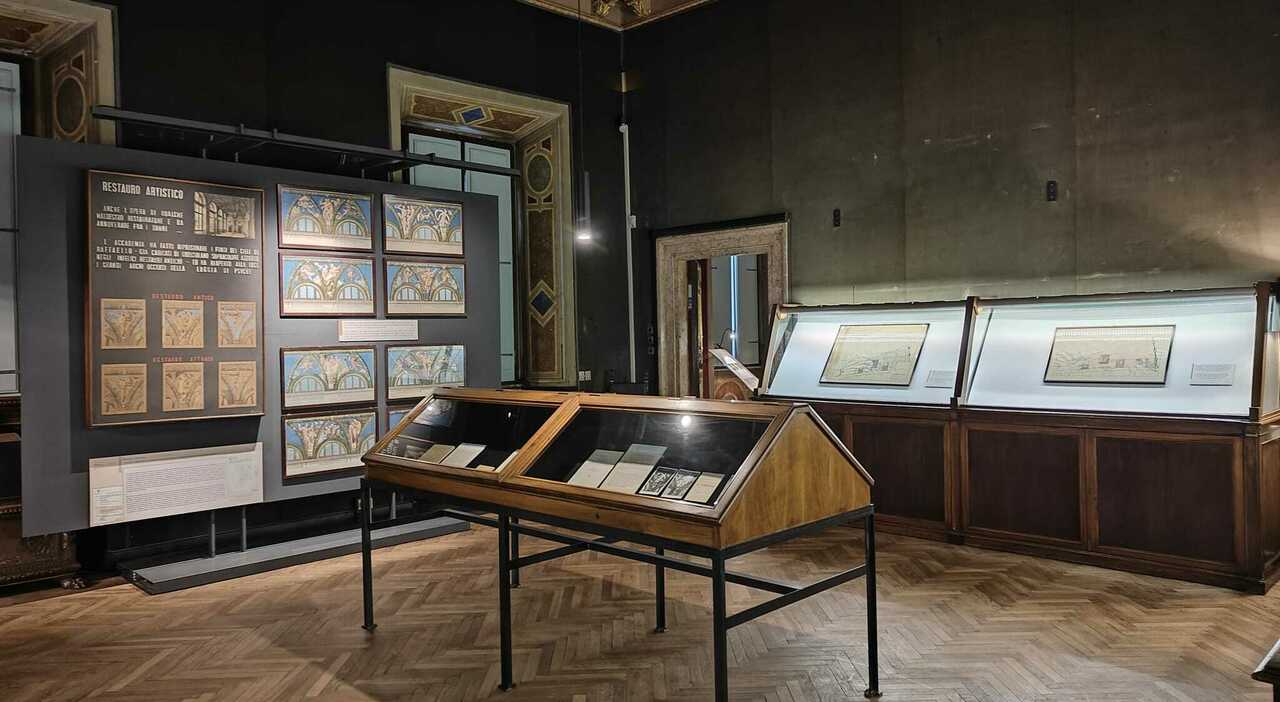Diagnostic investigations and research conducted in recent years at Villa Farnesina by the National Academy of Lincei have provided new elements to reconstruct the history of the Villa Farnesina and a more detailed knowledge of the decorative interventions that have disappeared or been hidden by whitewashing or fabric coverings, allowing a recovery of the decorations not only from the sixteenth century, but also from the seventeenth and nineteenth centuries, thus offering a new and broader enjoyment of the Villa together with the study of the pigments used over the centuries. The new arrangement on the first floor of the Villa Farnesina includes four sections.
In the first section, in collaboration with the Special Superintendency for Archaeology, Fine Arts and Landscape of Rome, the Capitolina Superintendency for Cultural Heritage, the French School of Rome and the National Roman Museum, titled "Trastevere in Roman times", the territory will be re-read from the Janiculum to the Tiber and that area that since the republican era and throughout the empire has been characterized by a mixture of urban aspects: from the Septimiana gate, in the northern sector of the Aurelian Walls, the so-called "Farnesina" stretch, now visible inside the garden of the Villa which is one of the few remains of the city wall still preserved on the right bank of the Tiber, on an ancient road route, the future Septimia street, up to the Roman Villa of the Farnesina, a complex inhabited from the late first century BC, on the banks of the Tiber and to the recent ancient structures found in the Garden of Palazzo Corsini that were used, very probably, for the cooking of ceramic materials or for the glazing of pottery objects, all this also in connection with the function of regimenting the waters that came from the Janiculum.
The other two sections of the exhibition aim to offer a new and broader diachronic reading of the palace between the nineteenth and twentieth centuries. The exhibition tour will tell the story of the Villa in the nineteenth century when inhabited by the Duke of Ripalda it experienced a change in its relationship with the city following the construction of the Tiber embankments. The section will highlight the nineteenth-century aspect of the rooms of Villa Farnesina focusing on the details and particulars of the decorative apparatus deepening especially the pictorial ornamentations with fake curtains and herb sauces specifically designed to complement the existing Renaissance fresco decoration. A multimedia room will tell the evolution of the textile wall decorations that from the sixteenth century to the contemporary age, from tapestries to coramis and wallpaper have also characterized Villa Farnesina as formidable indicators of the owner's well-being. Finally, an emphasis will also be placed on the city "around Villa Farnesina", with a focus on Palazzo Farnese and Palazzo Corsini. The last section will be dedicated to the restoration works carried out in the Thirties of the twentieth century when Villa Farnesina, now owned by the Italian State, was chosen to become the headquarters of the Royal Academy of Italy, an institution wanted by Mussolini for the management of Italian culture during his government in opposition to the liberal Lincei. As part of the Second Conference of Superintendents to Antiquity and Art in 1939, a "Restoration Exhibition" was also programmed, which would be held subsequently in 1940 of which the panels that were prepared will be displayed.
The Second Conference, the establishment of the Central Institute of Restoration and the Restoration Exhibition of 1940 constitute the basis of that profound theoretical reflection that unified at the national level the restoration methodologies on works of art and archaeological finds, overcoming the traditional concept of empirical restoration conducted until then. The section will conclude with the most recent results of the diagnostic and non-invasive analyses conducted on the pictorial materials of the "Raphael" Loggias to understand, in the belief that science and art are indissolubly linked, Raphael's execution technique and his workshop and the pigments he chose for the realization of the frescoes. The tour concludes with the fourth section dedicated to "The Triptych of Italian Genius", the series of initiatives with which the Lincei intended to celebrate in a unitary path the centenaries of Leonardo (2019), Raphael (2020) and Dante (2021).
This article is automatically translated
